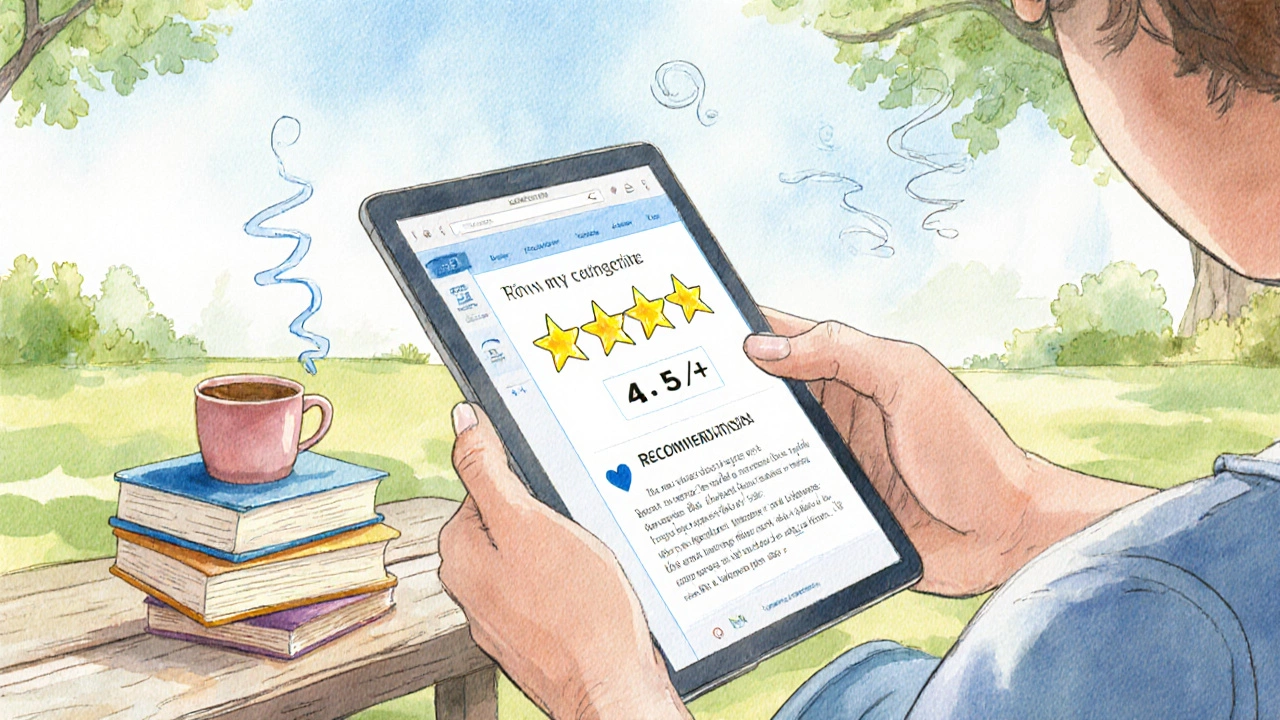How to Structure a Book Review: The Complete Format Guide

Book Review Structure Checker
Review Components Checklist
Check off the essential sections your book review should include:
Great Job!
Your review includes all essential components.
Review Incomplete
Your review is missing the following sections:
Standard Review Structure Overview
Includes title, author, genre, publisher, publication year, and ISBN.
Recommended Word Count: 30-50 wordsA 2-3 sentence overview without spoilers.
Recommended Word Count: 80-120 wordsIdentify central themes and motifs with supporting examples.
Recommended Word Count: 150-200 wordsComment on narrative voice, pacing, structure, and techniques.
Recommended Word Count: 120-150 wordsOverall impression with rating and supporting evidence.
Recommended Word Count: 100-150 wordsSuggest who will enjoy the book and why.
Recommended Word Count: 60-80 wordsWhen you sit down to write a book review is a critical evaluation of a book that summarizes its content, analyses its themes, and offers a personal judgment. It’s the bridge between the author’s ideas and the reader’s expectations, and it follows a predictable structure that helps you stay organized and persuasive.
Quick Take
- Start with a clear citation (title, author, genre, ISBN).
- Provide a concise summary of the plot or argument.
- Discuss key themes, style, and the author’s purpose.
- Offer an evaluation with supporting evidence and a rating.
- End with a recommendation tailored to a specific audience.
Why a Consistent Format Matters
Readers skim reviews before deciding whether to invest time or money in a book. A consistent format lets them find the information they need quickly. Publishers and blogs also favor a standard layout because it makes it easier to compare hundreds of titles.
Core Components of a Book Review
Every effective review contains six building blocks. Below each block is a brief definition and the key attributes you should cover.
- Bibliographic Information - Title, author, genre, publisher, publication year, and ISBN.
- Brief Summary - A 2‑3 sentence snapshot of the plot or main argument without spoilers.
- Thematic Analysis - Identify the central themes, motifs, or ideas the author explores.
- Stylistic Evaluation - Comment on narrative voice, pacing, structure, and any distinctive techniques.
- Critical Judgment - State your overall impression, back it up with examples, and assign a rating (stars, points, or a letter grade).
- Recommendation - Suggest who will enjoy the book and why.
Step‑by‑Step Guide to Crafting Your Review
Follow this workflow to produce a polished review in under an hour.
- Gather the Facts - Write down the bibliographic details. Include the ISBN and genre; these help readers locate the exact edition.
ISBN: 978‑0‑123456‑47‑2
- Read with Purpose - Highlight passages that illustrate tone, theme, or character development. Take notes on the first and last chapters for context.
- Draft the Summary - Keep it under 150 words. Avoid giving away twists unless you’re writing a spoiler‑heavy analysis.
- Identify Themes and Style - Answer: What does the author want us to feel? How does the narrative structure support that goal?
- Form Your Judgment - Choose a rating system that matches your platform. Provide 2‑3 concrete examples that justify the score.
- Write the Recommendation - Ask: Who would love this book? Who might be disappointed?
- Proofread and Cite - Ensure correct spelling of names and include a citation if you quote the text.

Sample Layout Using the Standard Format
| Section | Content Tips | Word Count |
|---|---|---|
| Bibliographic Info | Title, author, genre, publisher, year, ISBN | 30‑50 |
| Summary | Brief, spoiler‑free overview | 80‑120 |
| Thematic Analysis | Identify 2‑3 core ideas, support with quotes | 150‑200 |
| Stylistic Evaluation | Discuss voice, pacing, structure, originality | 120‑150 |
| Critical Judgment | Rating + justification, mention strengths/weaknesses | 100‑150 |
| Recommendation | Target audience, comparable titles | 60‑80 |
Using this template ensures you never miss a crucial element. Adjust the word counts based on the depth of your analysis and the platform’s space limits.
Formal Academic Review vs. Blog‑Style Review
| Aspect | Academic Review | Blog Review |
|---|---|---|
| Length | 2,000‑5,000 words | 500‑1,200 words |
| Tone | Objective, scholarly | Conversational, personal |
| Citations | APA/MLA footnotes, extensive bibliography | Occasional hyperlinks, brief source mention |
| Audience | Researchers, professors, graduate students | General readers, fans, community members |
| Rating System | Often none; focus on argument | Stars, points, thumbs‑up |
Pick the style that matches your platform. If you’re writing for a university journal, stick to the academic column. For a personal blog, feel free to use the informal voice and stars.
Common Pitfalls and How to Avoid Them
- Over‑summarizing - Readers can find the book themselves. Keep the synopsis short and focus on analysis.
- Vague Praise or Criticism - Saying “the book is great” without examples weakens credibility. Quote a pivotal line or describe a scene that illustrates your point.
- Ignoring Audience - A review that assumes everyone loves literary fiction will alienate genre fans. Mention who will benefit most.
- Missing Bibliographic Details - Forgetting the ISBN or publisher makes the review less useful for searches.
- Bias Without Disclosure - If you’re paid or have a personal connection, state it clearly.
Putting It All Together: A Mini‑Example
Below is a condensed review of a fictional novel, demonstrating each section in action.
Title: The Ember Coast
Author: Riley Hart
Genre: Historical Fiction
Publisher: Harbor Press, 2024
ISBN: 978‑1‑234567‑89‑0
Summary: Set in 1920s Sydney, a young seamstress uncovers a hidden network of immigrant activists fighting for workers’ rights. The narrative follows her transformation from quiet observer to outspoken leader.
Themes: Class struggle, identity, and the power of collective action. Hart weaves personal loss with broader social upheaval, showing how individual choices echo through history.
Style: Lyrical prose blended with newspaper‑clipping interludes creates a vivid period texture. Pacing slows during introspective moments but accelerates in protest scenes, mirroring the protagonist’s rising urgency.
Judgment: 4.5/5 stars. The novel excels in atmosphere and emotional depth, though occasional historical inaccuracies detract from its scholarly value.
Recommendation: Ideal for readers who enjoy richly detailed historical dramas like “The Luminaries” and those interested in early Australian labor movements.This concise version follows the exact book review format outlined above, making it easy for anyone to replicate.
Next Steps for Aspiring Reviewers
- Choose a platform (personal blog, Medium, academic journal) and adopt the corresponding tone.
- Read several high‑quality reviews in your niche; note how they structure each section.
- Write a draft using the step‑by‑step checklist, then revise for clarity and evidence.
- Invite a peer to read your review before publishing; fresh eyes catch missing citations or unclear arguments.

Frequently Asked Questions
How long should a typical book review be?
For most online platforms, 800‑1,200 words strike a balance between depth and reader attention. Academic journals may require 2,000‑5,000 words, while quick blog posts can be under 500 words if they focus on a strong recommendation.
Do I need to include a rating?
Ratings are optional but useful for readers who skim. If you use stars, circles, or a numeric score, explain what each level represents so the rating is transparent.
What citation style should I use when quoting a book?
Choose the style that matches your publication: MLA for literature classes, APA for social‑science contexts, or Chicago for humanities. Include page numbers for direct quotes.
Can I write a review without reading the whole book?
A thorough review requires reading the entire work. Skimming may work for very short articles, but it risks missing key arguments and can damage credibility.
How do I handle spoilers?
Place spoiler warnings before any major plot reveals. Many reviewers use a simple “Spoiler Alert” line or a collapsible section if the platform allows.
